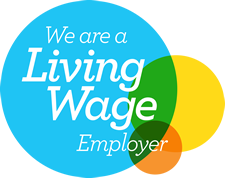
Insights
Helping not-for-profit organisations develop and sustain
the highest levels of employee and volunteer engagement

Insights
 Some organisations are pleased with their survey response rates, and many say that their response rates are lower than they hoped for.
Some organisations are pleased with their survey response rates, and many say that their response rates are lower than they hoped for.
Generally, we find organisations are looking to maintain high response rates or improve them.
But why is it important to have a good response rate?
The more people who complete your survey, the more data you will have and therefore the more credible your results will be.
With a good response rate, your results will be a stronger evidence set for reporting trends to your senior team, making decisions, and driving change.
This depends on whether you’re gathering feedback from your employees or volunteers. Yes, there really is a significant difference.

The average response rate for not-for-profit employee surveys is 70%. A good response rate from your employees would be somewhere between 60% and 80%.
Volunteer surveys are a different picture. We find that the average response rate for volunteer surveys is 20%.
Look at your response rates in the context of these averages across the sector and consider who you’re gathering feedback from. If your most recent engagement survey response rate is around 40-50%, that’s very high for volunteers, but rather low for employees.
Some of the barriers to getting good response rates include:
Let’s explore how you can address each of these barriers.
 Time is tight, particularly for non-profit employees and volunteers. Your people might feel like they simply don’t have the time to complete the survey because they are swamped with other deadlines and responsibilities.
Time is tight, particularly for non-profit employees and volunteers. Your people might feel like they simply don’t have the time to complete the survey because they are swamped with other deadlines and responsibilities.
One way to address this is to make sure your survey is designed to be quick and easy to complete. Limiting the number of questions will help to reduce the time requirement.
You might even consider running a pulse survey typically with 10-15 questions, instead of a full survey typically with 40-60 questions.
You can also use your survey communications to reassure people that it won’t take too long to complete, for example:
“I can say with confidence that the survey is quick and easy to complete and should only take you around 10-15 minutes.”
If people know how long it’s likely to take, they will hopefully be able to make time for it around their responsibilities.
 Some organisations find that their people don’t understand why they need to respond to a survey. What will be the outcome? How is their feedback going to be used?
Some organisations find that their people don’t understand why they need to respond to a survey. What will be the outcome? How is their feedback going to be used?
To address this, some of the key messages to include in your survey communications are:
A big contributor to engagement is people understanding how they contribute to the organisation’s mission and make a difference. Incorporate this into your survey communications to ensure that people know their feedback matters and is going to contribute to plans going forward.
Hopefully this will result in not only encouraging your people to complete the survey, but to give open, honest, and detailed feedback.
For more detail on how to explain the importance of your survey, and some real-life examples, download our free guide ‘Getting your survey communications right’.
It is important to gather feedback from a diverse and wide range of employees and volunteers to get multiple perspectives. Work on the accessibility of your survey to ensure everyone feels listened to.
Some organisations find it hard to get survey responses from those who don’t have access to PCs or internet during their work or volunteering hours. In these cases, you could take a tablet to them on-site with the survey ready to be completed.
 For those who have difficultly accessing online systems, you could provide support in the form of a trusted team member standing with them available to answer any technical questions. Don’t forget that paper surveys are still an option as well.
For those who have difficultly accessing online systems, you could provide support in the form of a trusted team member standing with them available to answer any technical questions. Don’t forget that paper surveys are still an option as well.
Are your people becoming bored of completing surveys and uninterested in proving feedback?
Survey fatigue can cause your response rates to slip over time. Often this is due to surveys feeling repetitive, happening too frequently, or taking too long to complete.
Reducing the number of questions in your surveys and therefore the time requirement, as described above, can help to address this. You might also evaluate your survey “rhythm” i.e. how many surveys you do per year, and consider cutting this down.
If you clearly communicate the purpose of your surveys, ensuring your people know how they are tied into specific initiatives, then the risk of your people becoming disinterested will hopefully be reduced.
Our tips to tackling survey fatigue:
One of the essential messages to include when you are promoting your survey to your people is that the survey is confidential.
This means detailing what measures you are taking to ensure that their responses are not attributable to them as an individual. For instance:
An example of how to convey this crucial message is:
“… Agenda will only provide information on results to ABC in a way which prevents the identification of any individual or their comments. Agenda will provide survey reports where the number of responses meeting the search criteria is 5 or more …”
See more real-life examples by downloading our free guide ‘Getting your survey communications right’.
If little or no action has been taken after previous surveys, then many of your people will need persuading that it is worth spending time on your next survey.
You might find yourself in one of the three following situations:
Situation |
Key message |
| A) You took action off the back of your last survey, and this was well communicated | Issue a reminder of this on the lead-up to your next one. |
| B) You took action, but the communication about it was patchy | Tell people what happened and reinforce it, since it’s a new message. |
| C) You took little to no action off the back of your last survey | Acknowledge this, say why it will be different this time around, and be specific about the planned post-survey process. The key is to be transparent. |
The biggest thing you can do to ruin your response rate is to not take action, and not show your people how you are taking their feedback seriously.
For further guidance on action planning, download our free guide ‘Taking action from your survey’.
So, you’ve put in the effort to encourage your people to respond, and now you want to see your hard work come to fruition.
It is helpful to be able to track your response rates while the survey is live.
The platform you’re using to run your survey should offer the option to track how many responses you’re getting.
Some platforms, like Reflections, enable you to see this broken down by department.
![]()
One way to encourage responses is to share a weekly league table of response rates with managers.
This enables you to see which departments need more encouraging, and perhaps spark some friendly competition between managers to try and reach the top of the league table!
Looking at the example above, these response rates are already very good. However, if I were the Marketing and Communications department lead, I might aim to boost my department’s response rate by sending another email or issuing a verbal request in a weekly meeting.
What did your response rates look like in your last survey? What barriers are you facing in your efforts to increase response rates? Do you think we’ve missed anything here?
We’d love to hear from you – let us know.
 Author: Camilla Clarke
Author: Camilla Clarke
Senior Marketing Executive, Agenda Consulting
Agenda Consulting
Belsyre Court
57 Woodstock Road
Oxford
OX2 6HJ
UK
Company No: 4509427
